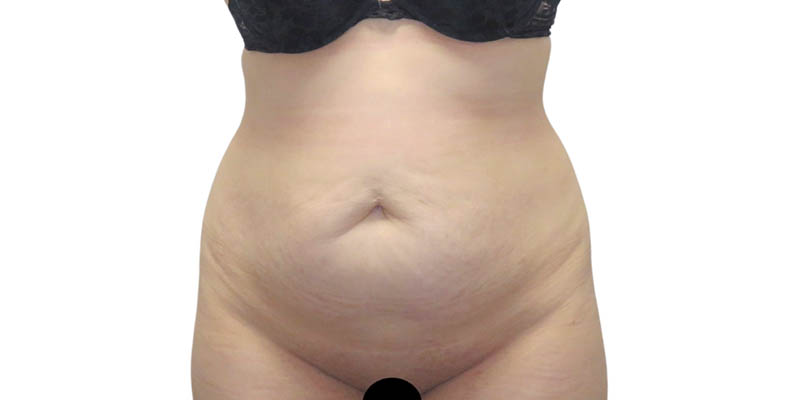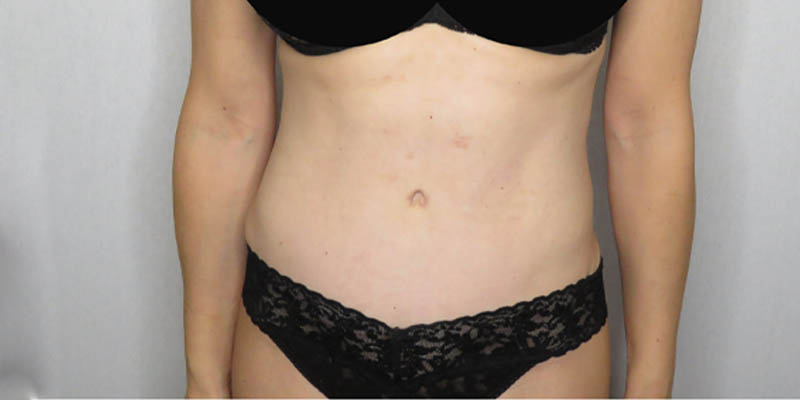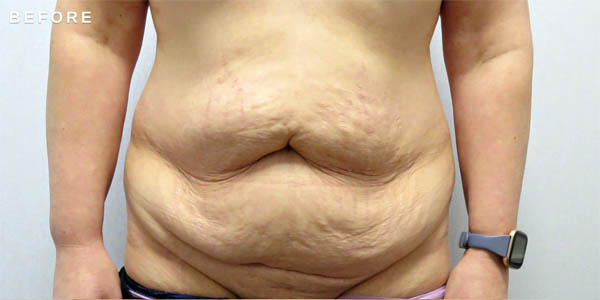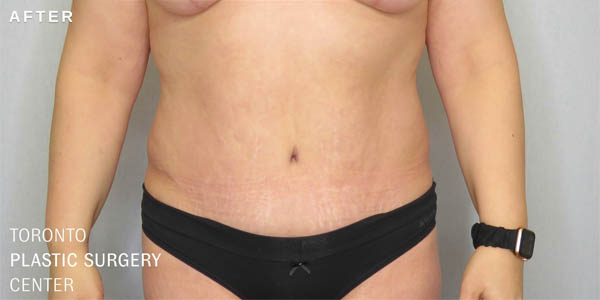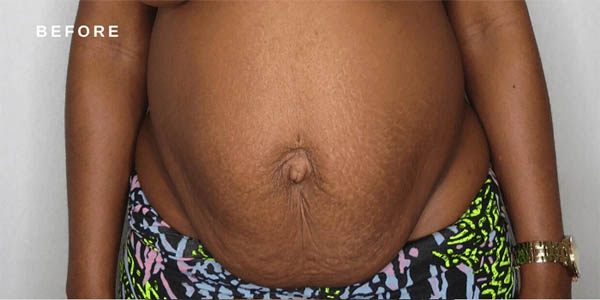- Body
- Breast
- Face
- Injectables
- BOTOX®, Dysport & Nuceiva
- Dermal Fillers
- Earlobe Filler
- Facial Slimming
- Gummy Smile Correction
- Hyaluronidase
- Hyperhidrosis
- Jawline Filler
- Lip Injections
- Non-Surgical Brow Lift
- Non-Surgical Double Chin Reduction
- Non-Surgical Facelift
- Non-Surgical Hand Rejuvenation
- Non-Surgical Nose Job
- Tear Trough Treatment
- Skin
- Male
- Gallery
- About
- Resources
- Contact
Introduction
Tighten With Tummy Tuck
Pregnancy, significant weight loss, and aging can often result in excess skin and weakened abdominal muscles, leaving many individuals feeling less confident in their bodies. While non-surgical methods may provide temporary relief, stretched skin—whether from pregnancy or weight fluctuations—often loses its elasticity and doesn’t fully return to its original shape. A tummy tuck (abdominoplasty) is a transformative surgical procedure designed to remove excess skin, tighten abdominal muscles, and restore a smoother, more contoured appearance.
This highly effective procedure is one of the most popular cosmetic surgeries in Toronto, helping individuals regain confidence and enjoy a more sculpted silhouette. Dr. Pirani frequently performs tummy tucks at The Toronto Plastic Surgery Center, tailoring the procedure to suit each patient’s unique needs and goals.
Before & After Results
* The results depicted are not guaranteed and may vary between patients.

What is a Tummy Tuck?
A tummy tuck, also known as an abdominoplasty, is a transformative surgical procedure aimed at enhancing the shape and contour of the abdominal area. This procedure removes excess abdominal fat and skin while tightening the abdominal wall muscles, a condition commonly known as diastasis recti.
A tummy tuck is one of the most frequently performed cosmetic plastic surgery procedures in Toronto. It is often combined with other procedures, such as liposuction, to achieve the most refined abdominal contour. Many women opt to combine a tummy tuck with a breast lift or breast augmentation as part of a “Mommy Makeover,” addressing both the abdominal area and the breasts after the physical changes of pregnancy.
Many patients choose to undergo a tummy tuck after significant weight loss or following pregnancy to restore a smoother, firmer, and more sculpted abdominal appearance. Dr. Pirani at The Toronto Plastic Surgery Center is skilled in tailoring this procedure to each patient’s specific needs, helping them achieve optimal results and renewed confidence.
Types of Tummy Tuck
What Are the Benefits of an ABDominoplasty or Tummy Tuck?
A Tummy Tuck (abdominoplasty) can significantly improve the appearance of the abdomen if you have loose abdominal skin, small amounts of excess abdominal fat, abdominal stretch marks (striae), or lax abdominal muscles (diastasis recti). Many people experience these issues after losing a significant amount of weight or after pregnancy.
Good surgical candidates should be relatively healthy. Smokers should quit smoking at least six weeks prior to surgery and continue to avoid nicotine for a further 6 weeks after surgery.
- Loose Skin And Striae (Stretch Marks) – Unfortunately, loose and stretched-out skin is common after pregnancy or significant weight loss. A tummy tuck excites loose skin and overlying stretch marks to tighten and contour the abdomen. Exercise and non-surgical treatments simply cannot improve loose abdominal skin to the same degree as an abdominoplasty.
- Excess Abdominal Fat – A tummy tuck removes loose abdominal skin and underlying fat. In addition, liposuction can be added to an abdominoplasty to contour the flanks and remove additional subcutaneous abdominal fat. Understanding that a tummy tuck is not a weight loss procedure is critical. Patients should be at their ideal body weight prior to an abdominoplasty. Ideally, their Body Mass Index (BMI) should be 30 or less.
- Diastasis Recti (Lax Abdominal Muscles) – Pregnancy is the most common cause of separation of the core abdominal muscles. This is often experienced as a bulge of the abdomen despite having a healthy physique. During an abdominoplasty, this separation of the abdominal muscles can be corrected by reducing the separation and suturing the muscles together (plication). Dr. Pirani usually performs a 2-layer plication (muscle repair) of the diastasis to create a strong internal corset and maximize the improvements in abdominal contour. The result is a flattened abdomen, smaller waistline, and improved core abdominal muscle efficiency. Many patients also note improvements in lower back pain and stress urinary incontinence.
How Does Dr. Pirani Perform A Tummy Tuck (Abdominoplasty)?
Depending on the amount of excess skin, fat, and muscle weakening that you have, Dr. Pirani will customize a unique surgical plan to address your concerns while minimizing incision size.
A mini tummy tuck (a smaller incision) is often the best option for people with minimal excess skin or abdominal fat. This procedure can be combined with tightening of the abdominal core musculature to optimize abdominal shape and create a rejuvenated and youthful appearance with minimal scarring.
A more traditional tummy tuck (an incision from hip to hip) may be the optimal choice for individuals with more significant excess skin, fat, or stretch marks.
Regardless of the amount of excess abdominal tissue you have, Dr. Pirani will devise a surgical approach that minimizes scarring while maximizing results. Dr. Pirani will often combine liposuction procedures with abdominoplasty surgery to optimize your cosmetic result.

What’s the
First step?
There is a large amount of information to review during an abdominoplasty consultation. Your initial consultation with Dr. Pirani will take about 30 minutes. During this time, he will discuss all of the surgical options relevant to you. Dr. Pirani will then create a custom surgical plan for you. He will go over risks and complications and give you an idea of what you should expect in terms of results and recovery.
Dr. Pirani’s goal is to educate you so that you fully understand your customized surgical plan.
Call 416-360-8772 to schedule a consultation with Dr. Pirani, a Toronto tummy tuck (abdominoplasty) surgeon. We look forward to meeting you.
What to Expect on the Day of Tummy Tuck Surgery
Dr. Pirani performs all abdominoplasty procedures under general anesthesia. An incision is made low on the abdomen and extended up to each hip. An incision is also made around the belly button. The intervening excess skin, underlying fat, and overlying stretch marks are elevated and removed. The muscle separation is identified and surgically reduced with a two-layer internal corset repair. Liposuction is performed on adjunct areas such as the flanks.
The remaining abdominal skin is then pulled down and meticulously closed in 3 layers. Internal sutures are usually placed to limit the use of drains; however, Dr. Pirani usually prefers to place two drains to limit the risk of fluid collections (seromas) post-operatively. A small incision is made in the abdominal skin, and the belly button is brought through this incision and sutured into place. Dr. Pirani takes care not to make a circular scar around the belly button or place sutures on the outside of this area to avoid the telltale “starburst” suture pattern often seen in tummy tucks.
Most people can go home the same day after a mini-tummy tuck. However, we usually keep patients with full or more extensive tummy tuck procedures overnight for observation.
Tummy Tuck Recovery
After your tummy tuck surgery, Dr. Pirani will usually have you stay overnight in our accredited surgical facility. During your stay, you will be cared for by two nurses in one of our private surgical suites. These nurses are there to ensure you are healing well and keep you comfortable during the immediate recovery phase. Dr. Pirani will see you the next morning to ensure you’re doing well before discharging you home. You will see Dr. Pirani regularly after your tummy tuck surgery.
Patients generally take several weeks to recover from an abdominoplasty. Most patients are able to return to work within two weeks; however, the type of abdominoplasty you receive and the physical demands of your occupation will determine when you can return to work. After an abdominoplasty, you will generally need to wear a compression garment for 6 weeks to decrease swelling. When a muscle plication is performed to correct diastasis recti or fascial laxity, you must avoid activating your abdominal core muscles for 3 months after surgery. This means no sit-ups or similar activities for 3 months.

How Much Does a Tummy Tuck Cost in Toronto, Ontario?
The cost of a tummy tuck in Toronto can range from CAD $14,500 to $17,000, depending.
On factors such as the surgeon’s experience, the clinic’s location, and the extent of the procedure. It’s essential to have a consultation with a board-certified plastic surgeon to
Get a personalized quote based on your specific needs.
Why Choose Dr. Pirani?
Dr. Pirani is a board-certified plastic surgeon with extensive experience performing abdominoplasty procedures. He uses the latest surgical techniques and technology to ensure optimal results and minimize downtime and discomfort. Dr. Pirani is regarded as an expert tummy tuck specialist and a top plastic surgeon in Toronto, Ontario. Our clinic has been awarded the Top Choice Award for Plastic Surgery Clinic of 2023 and 2022 and named the Toronto Star Reader’s Choice Award winner for Cosmetic Surgery Services.
We believe that each patient’s needs and goals are unique, so we personalize every abdominoplasty procedure. We work closely with you to understand your desired outcome and create a customized treatment plan that meets your needs. Dr. Pirani strives to provide each patient with the best tummy tuck results possible.
Our patients are consistently thrilled with the results of their abdominoplasty procedures, which help improve their confidence and quality of life. We take great pride in our work and are committed to delivering exceptional results that exceed your expectations.
Tummy Tuck FAQ’S
Toronto Plastic Surgery Center
Schedule a Consultation
Call 416-360-8772 to schedule a consultation with Dr. Pirani, a Toronto tummy tuck (abdominoplasty) surgeon. We look forward to meeting you.
